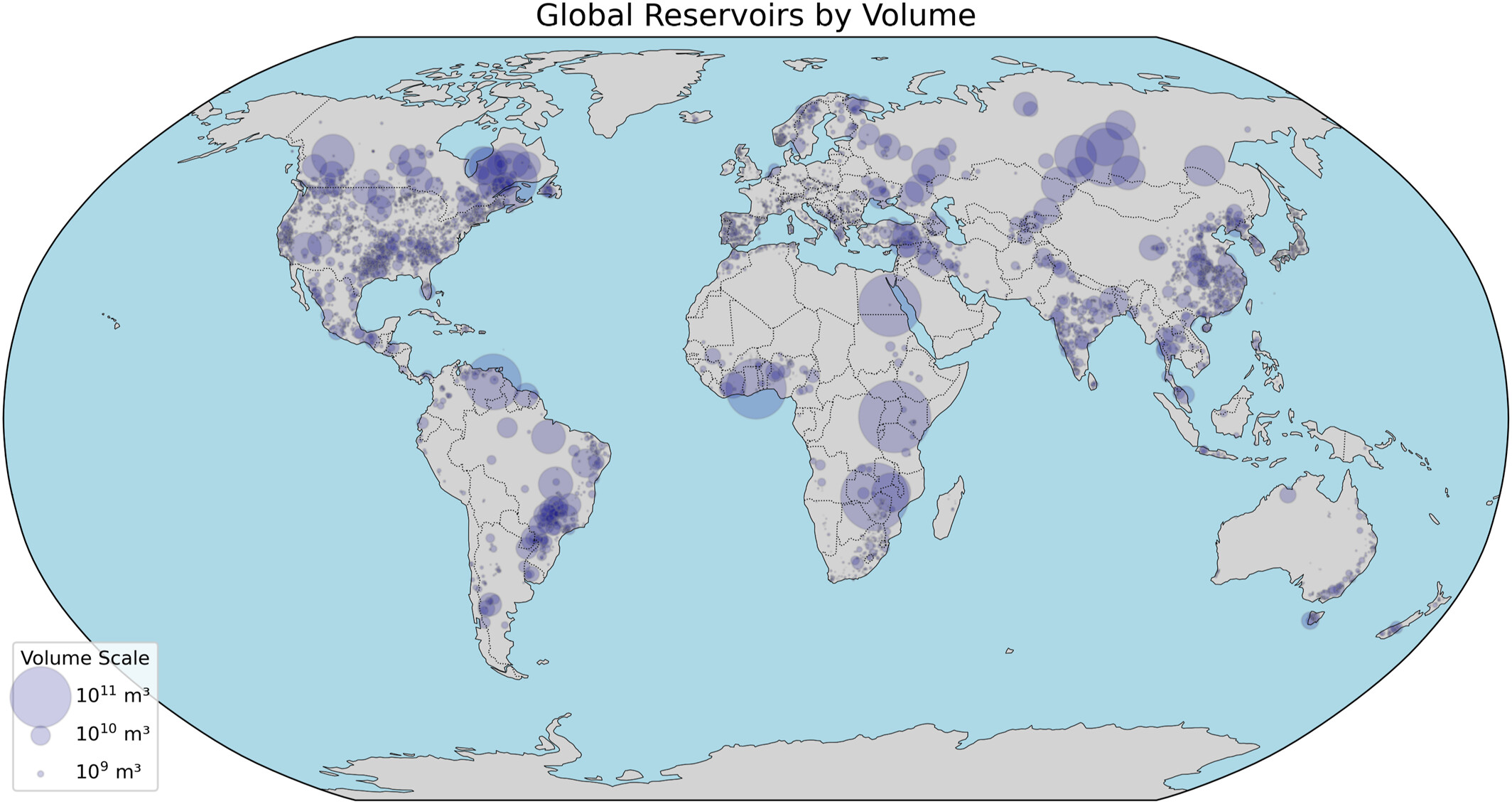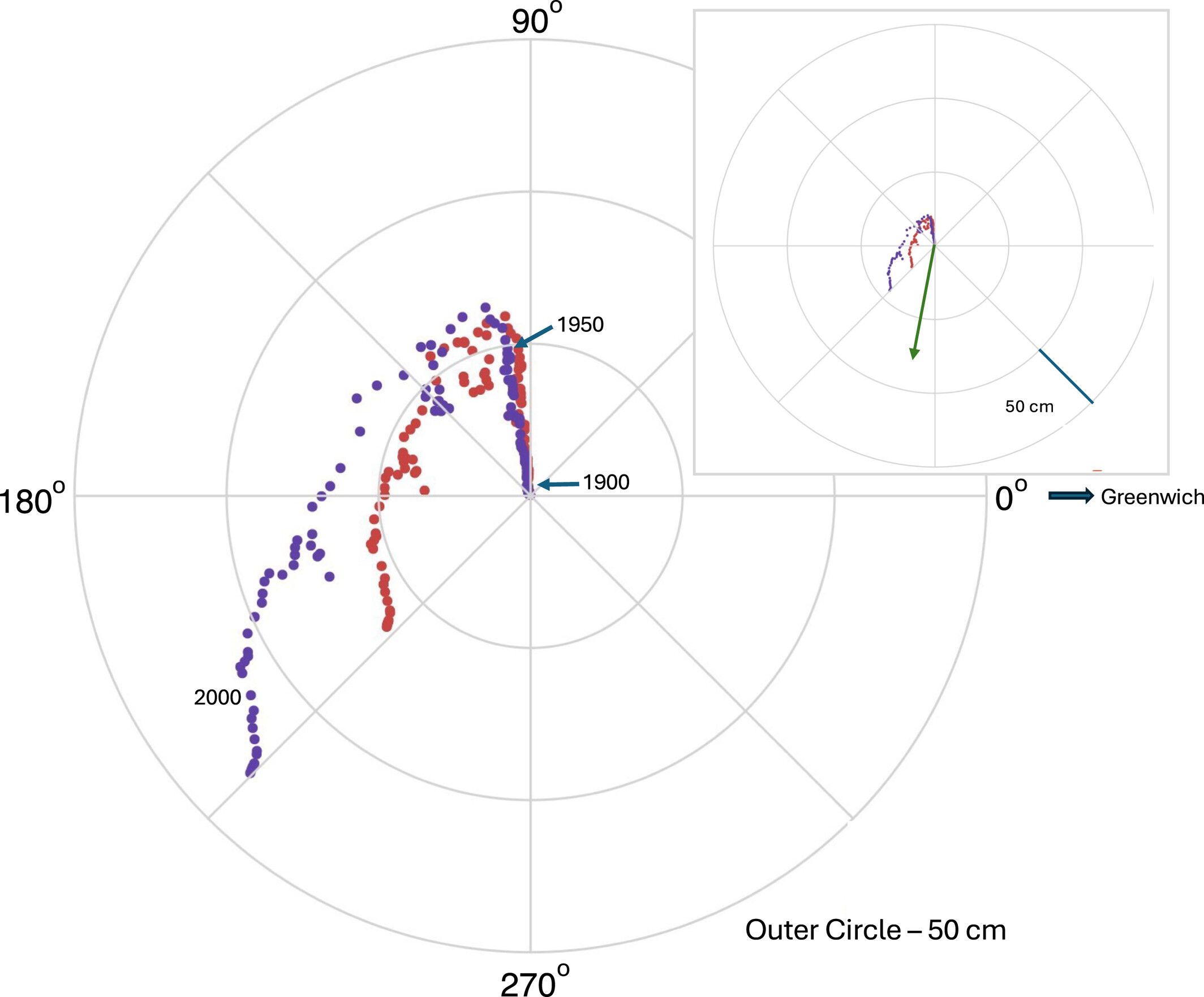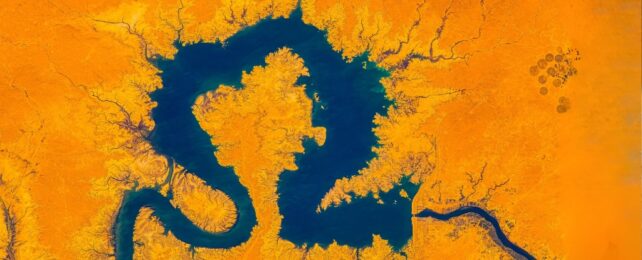Recent shifts in Earth's magnetic field have human fingerprints all over them. While it is normal for our planet's magnetic poles to sporadically wander, new research shows we've now amassed enough water behind dam walls to account for at least some of the current movements.
Harvard University geophysicist Natasha Valencic and colleagues calculated that the masses concentrated in just under 7,000 of Earth's biggest dams have knocked the crust's axis of rotation off kilter by around one meter (three feet) relative to the dynamo that drives the magnetic fields beneath the crust.
What's more, all this water hoarding has also caused a 21-millimeter-drop in sea levels.
Related: Earth's Rotation Is Slowing Down, And It Might Explain Why We Have Oxygen
"As we trap water behind dams, not only does it remove water from the oceans, thus leading to a global sea level fall, it also distributes mass in a different way around the world," says Valencic.

This mass redistribution can impact Earth's magnetic pole positions relative to the surface.
Extra weight added to a spinning sphere pulls the weighted part towards the equator, shifting the axis around which the sphere spins. So, redistributing Earth's surface weight re-orientates its spin axis, whether that be through damming water, melting glaciers, or groundwater removal.
But it's only Earth's outer crust floating over its gooey inner parts – not the inner goo generating the magnetic field – that shift, leading to a different part of Earth's surface sitting over our planet's inner magnetic north.
So, while north itself hasn't really moved in space, Earth's surface has shifted around, over the top of it. This phenomenon is called true polar wander.

Valencic and team found the North Pole shifted in two phases. From 1835 to 1954 it shifted eastward towards Russia by about 20 centimeters (8 inches) as dams were built in Europe and North America. Then it moved 57 centimeters west toward North America between 1954 and 2011 as more dams were built in Asia and East Africa.
"We're not going to drop into a new ice age, because the pole moved by about a meter in total, but it does have implications for sea level," explains Valencic.
The researchers calculated that we've so far trapped a quarter of the sea level rise so far this century – about 1.2 millimeters per year – behind dams. In some ways, this could be considered a good thing, given that human-induced climate change is causing sea levels to rise, already creating damaging tidal surges with the help of our increasingly turbulent atmosphere's storms.
These findings need to be taken into account in estimates of future sea level rise, the researchers caution.
"Depending on where you place dams and reservoirs, the geometry of sea level rise will change," says Valencic. "That's another thing we need to consider, because these changes can be pretty large, pretty significant."
Shifting magnetic poles add to a growing list of planetary-wide phenomena humans are inadvertently messing with, including shrinking atmospheric layers, altering ocean circulation, and activating volcanoes.
This research was published in Geophysical Research Letters.
